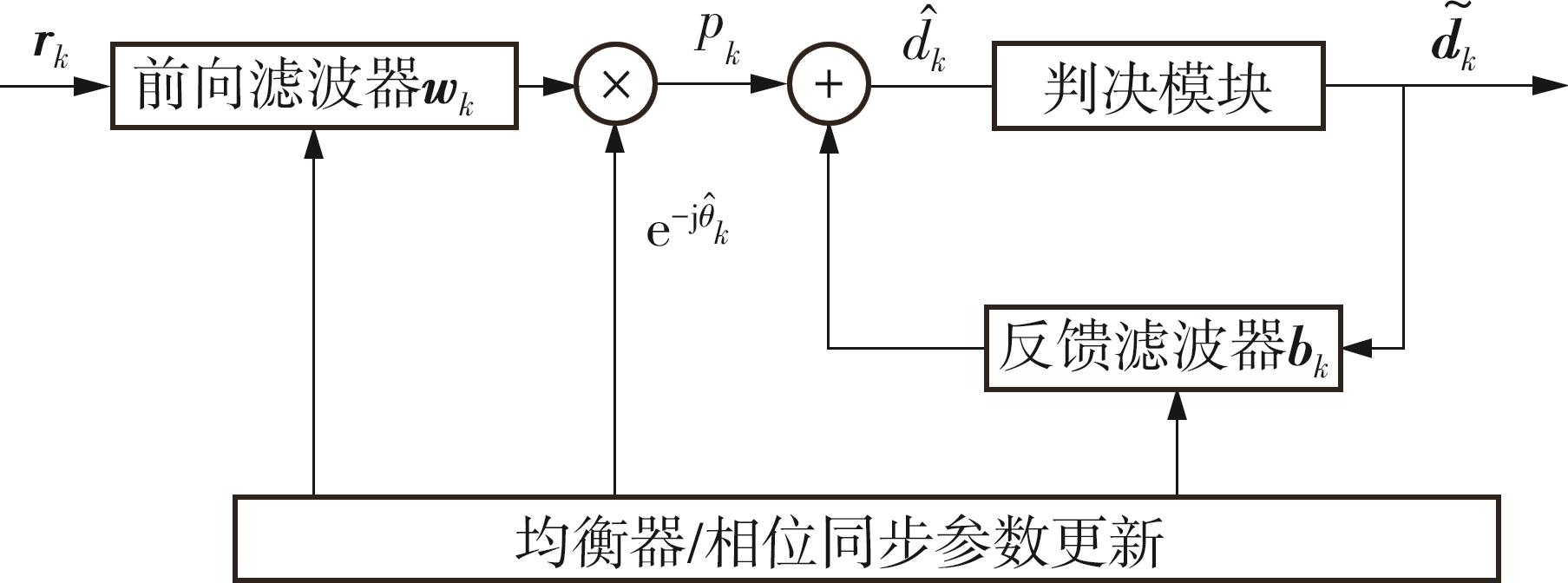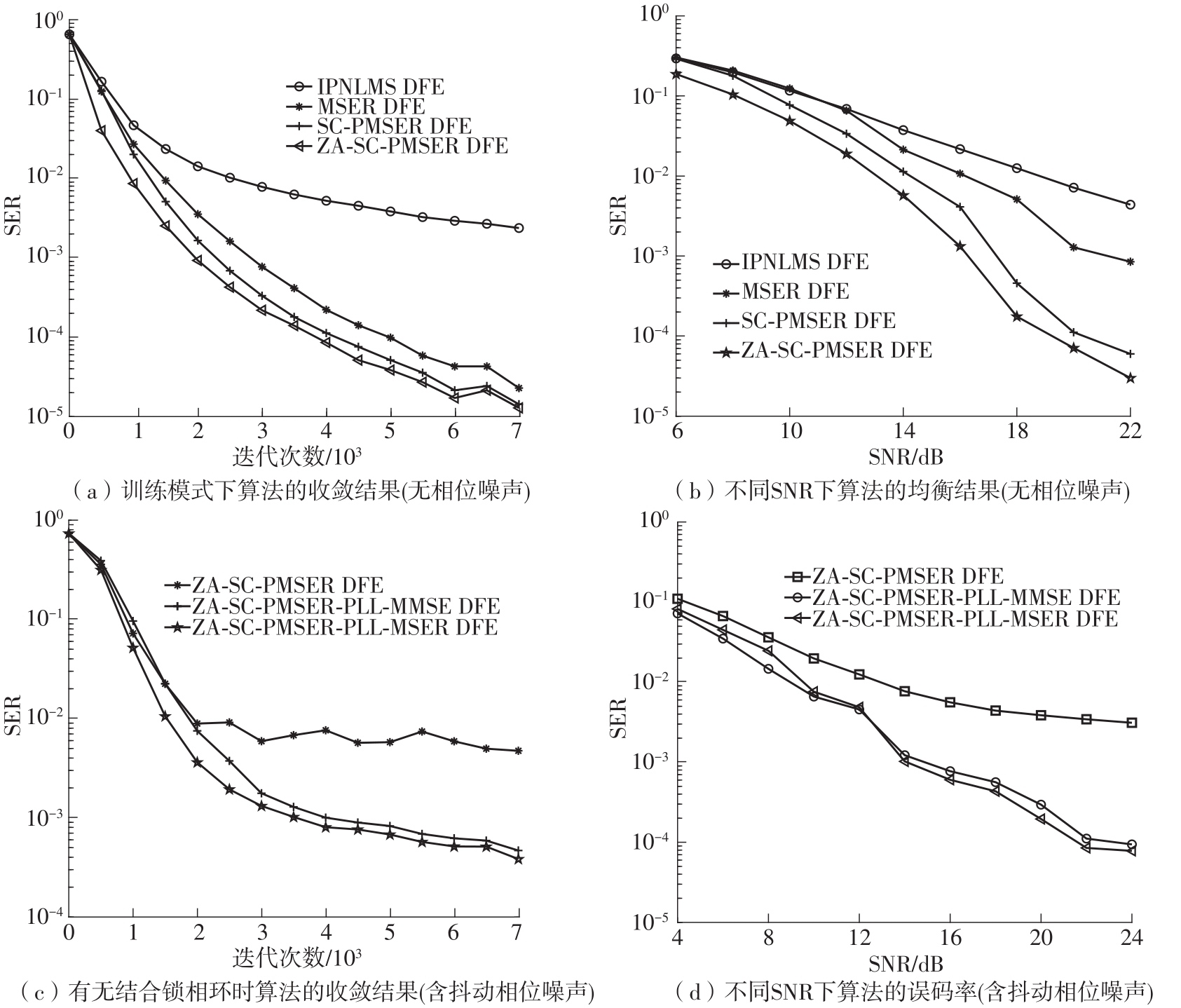| 1 |
SINGER A C, NELSON J K, KOZAT S S .Signal processing for underwater acoustic communications [J].IEEE Communications Magazine,2009,47(1):90-96.
|
| 2 |
KOCIC M, BRADY D, STOJANOVIC M .Sparse equa-lization for real-time digital underwater acoustic commu-nications [C]∥ Proceedings of 1995 MTS/IEEE Confe-rence “Challenges of Our Changing Global Environment”.San Diego:IEEE,1995:1417-1422.
|
| 3 |
RONTOGIANNIS A A, BERBERIDIS K .Efficient decision feedback equalization for sparse wireless channels [J].IEEE Transactions on Wireless Communications,2003,2(3):570-581.
|
| 4 |
CHNG E S, CHEN S, MULGREW B .Efficient computational schemes for the orthogonal least squares algorithm [J].IEEE Transactions on Signal Processing,1995,43(1):373-376.
|
| 5 |
魏昕,赵力,邹采荣 .浅海水声通信中的间接自适应均衡算法 [J].电子与信息学报,2009,31(4):916-919.
|
|
WEI Xin, ZHAO Li, ZOU Cai-rong .Indirect adaptive equalization algorithm for shallow water acoustic communication [J].Journal of Electronics and Information Te-chnology,2009,31(4):916-919.
|
| 6 |
冉茂华,黄建国,韩晶 .水声通信中基于信道估计的稀疏均衡算法研究 [J].系统仿真学报,2009,21(14):4479-4482.
|
|
RAN Mao-hua, HUANG Jian-guo, HAN Jing .Simulation of multichannel sparse equalization algorithm based on channel estimation for underwater acoustic communications [J].Journal of System Simulation,2009,21(14):4479-4482.
|
| 7 |
CHEN Y, GU Y, HERO A O .Sparse LMS for system identification [C]∥ Proceedings of 2009 IEEE International Conference on Acoustics,Speech and Signal Processing.Taipei:IEEE,2009:3125-3128.
|
| 8 |
TAO J, AN L, ZHENG Y R .Enhanced adaptive equa-lization for MIMO underwater acoustic communications [C]∥ Proceedings of OCEANS 2017.Anchorage:IEEE,2017:1-5.
|
| 9 |
DUTTWEILER D L .Proportionate normalized least-mean-squares adaptation in echo cancelers [J].IEEE Tran-sactions on Speech and Audio Processing,2000,8(5):508-518.
|
| 10 |
BENESTY J, GAY S L .An improved PNLMS algorithm [C]∥ Proceedings of 2002 IEEE International Confe-rence on Acoustics,Speech,and Signal Processing.Orlando:IEEE,2002:1881-1884.
|
| 11 |
KHONG A W H, NAYLOR P A .Efficient use of sparse adaptive filters [C]∥ Proceedings of 2006 the Fortieth Asilomar Conference on Signals,Systems and Compu-ters.Pacific Grove:IEEE,2006:1375-1379.
|
| 12 |
YEH C C, BARRY J R .Adaptive minimum bit-error rate equalization for binary signaling [J].IEEE Tran-sactions on Communications,2000,48(7):1226-1235.
|
| 13 |
YEH C C, BARRY J R .Adaptive minimum symbol-error rate equalization for quadrature-amplitude modulation [J].IEEE Transactions on Signal Processing,2003,51(12):3263-3269.
|
| 14 |
MULGREW B, CHEN S .Adaptive minimum-BER decision feedback equalisers for binary signalling [J].Signal Processing,2001,81(7):1479-1489.
|
| 15 |
CHEN S, HANZO L, MULGREW B .Adaptive minimum symbol-error-rate decision feedback equalization for multilevel pulse-amplitude modulation [J].IEEE Transactions on Signal Processing,2004,52(7):2092-2101.
|
| 16 |
CHEN S, HANZO L, LIVINGSTONE A .MBER space-time decision feedback equalization assisted multiuser detection for multiple antenna aided SDMA systems [J].IEEE Transactions on Signal Processing,2006,54(8):3090-3098.
|
| 17 |
GONG M, CHEN F, YU H,et al .Normalized adaptive channel equalizer based on minimal symbol-error-rate [J].IEEE Transactions on Communications,2013,61(4):1374-1383.
|
| 18 |
WANG Z, CHEN F, YU H,et al .Sparse decision feedback equalization for underwater acoustic channel based on minimum symbol error rate [J].International Journal of Naval Architecture and Ocean Engineering,2021,13:617-627.
|
| 19 |
STOJANOVIC M, CATIPOVIC J A, PROAKIS J G .Phase-coherent digital communications for underwater acoustic channels [J].IEEE Journal of Oceanic Engineering,1994,19(1):100-111.
|
| 20 |
李记龙,冯海泓,黄敏燕 .强多径干扰下的水声通信均衡算法研究 [J].声学技术,2016,35(1):73-77.
|
|
LI Ji-long, FENG Hai-hong, HUANG Min-yan .Study of channel equalization of underwater acoustic communication in multipath horizontal channel [J].Technical Acoustics,2016,35(1):73-77.
|
| 21 |
CANDÈS E J, WAKIN M B, BOYD S P .Enhancing sparsity by reweighted l1 minimization [J].Journal of Fourier Analysis and Applications,2008,14(5):877-905.
|
| 22 |
HOYER P O .Non-negative matrix factorization with sparseness constraints [J].Journal of Machine Lear-ning Research,2004,5(9):1457-1469.
|
| 23 |
王振忠 .水声通信中基于最小误码率的稀疏均衡 [D].广州:华南理工大学,2019.
|
| 24 |
ARIYAVISITAKUL S .A decision-feedback equalizer with selective time-reversal operation for high-rate indoor radio communication [C]∥ Proceedings of 1990 IEEE Global Telecommunications Conference and Exhibition.San Diego:IEEE,1990:2035-2039.
|
| 25 |
ZHONG X, CHEN F, ZHENG B,et al .Minimum symbol-error rate equalization based Turbo receiver for underwater acoustic communications [C]∥ Proceedings of the 10th International Conference on Underwater Networks & Systems.New York:Association for Compu-ting Machinery,2015:1-5.
|















